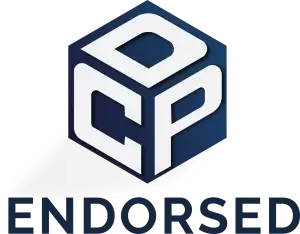Most people read a lot on various topics but a few of them actually apply this learning to their daily lives. The point is you can never actually learn or grow if you cannot put theory into practice whether it’s for personal or professional development.
The whole thing could be challenging and continuing professional development can help bridge this gap. With a range of CPD events and activities, one can gain additional knowledge and enhance their skills, experience, hands-on training, and work on their abilities.
The Common Gap Between Theoretical Learning and Practical Implementation
Theory and practice can be easily understood as the two sides of the same coin. Both are equally important in any aspect of learning. For instance, if you are associated with the medical field, you won’t get far by only reading and writing. You must know how to actually perform a check-up, or surgery on a patient in order to be successful in the field, otherwise, you would badly fail.
However, there might not be enough opportunities to offer hands-on experience, and this is where CPD comes in. Anyone looking to maintain and update their skills can participate in continuing education.
So, even with a strong theoretical foundation, a lack of practical experience can limit your abilities; here is how:
- Many skills require practice to master them; for instance, you cannot be good at communication or problem-solving skills without real-world application.
- Other than that, theory cannot always allow you to anticipate every challenge you face in a workplace environment. With practical experience, you cannot only think fast but will also be able to come up with a solution promptly.
- Last but not least, with a lack of confidence, adapting or shifting to a new role can be extremely daunting for you. Participating in real-world scenarios can help you cope with this challenge as well.
- Considering these challenges, undertaking relevant CPD activities can help you master any skill required to achieve the best results possible.
How Can CPD Help to Bridge the Gap Between Theory and Practice?

As we have mentioned before, you might face multiple challenges regarding putting theory into practice and CPD can help you cater to this issue.
Therefore, we have mentioned various aspects of how continuous learning can help bridge that gap effectively, allowing you to excel and grow in your relevant field .
To Cater Industry-specific Trends
Following are the examples from some industries about the ways to cater to the challenges in that specific industries
CPD for IT Experts
Professionals related to the IT industry can benefit from structured learning opportunities. These opportunities are often offered by organisations like Microsoft, ensuring that tech individuals stay current with the latest technologies and advancements.
For example, a software engineer can join a workshop on cloud computing and then use the knowledge gained to successfully move their company’s data to the cloud.


CPD for Healthcare Professionals
Healthcare professionals can also gain CPD courses or certifications and gain the latest knowledge. Gaining knowledge and applying it in the real world happens through interacting with patients.
For instance, if nurses want to learn about how they can handle chronic pain, they can take a workshop on managing chronic pain and then implement the strategy while caring for their patients.
In such a way, the combination makes sure that healthcare professionals are staying relevant and polishing their skills in a practical setting.
CPD for Educationists
While teaching, only transferring knowledge and assigning homework is not enough. A teacher must know how to cater to the individualised needs of their students, create an inclusive classroom or apply new teaching methodologies in the class.
For instance, teachers can take a CPD course on gamification in education and then create a math game to make practising multiplication tables more engaging and fun for their students.
This continuous cycle of learning, applying, and reflecting bridges the gap between educational theory and effective classroom practice.

Focus on Practical Skills

CPD Programmes or events are designed in a way to teach theoretical knowledge and how to apply it to real-world situations. You will not only gain foundational concepts but hands-on experience through exercises or simulations as well.
Think of it as learning a new recipe. Reading the instructions helps, but making the dish is what really helps you understand and be able to make it on your own.
Interactive Learning Methods

CPD is different from old traditional methods of learning as it includes multiple methods that help individuals bridge the gap between theory and practical application. It may include:
- Discussions
- Role-playing
- Group activities
Engaging in these activities will enhance professionals’ understanding of knowledge in a simulated environment – how to apply learned concepts and build confidence in real-world scenarios.
Sharing & Learning from Peers

CPD offers more opportunities than just participating in Programmes, events or activities. It provides a valuable networking opportunity via group discussions, online forums or workshops. By engaging in these CPD activities you can meet professionals similar to your profession and share your challenges or experiences.
What Tools and Resources Used for Practical Learning?

Here are some tools and resources used for practical learning:
- Online Platforms
- Workshops and Seminars
- Short courses
- Training programmes
Is CPD Time-Effective in Bridging the Theory-practice Gap Compared to Traditional Learning Methods?
Yes, CPD is more time-effective in bridging the theory-practice gap compared to traditional learning methods. The reason is, that it combines both theoretical and practical knowledge – discussions, group work, and peer interaction – leading to faster learning and better retention.
What Types of CPD (e.g., online courses, workshops) are Best Suited for Bridging Your Gaps?
When picking a CPD Programme or course, it’s best to think about your goals in your field first. Make sure you are specific about your goal, then choose what type of CPD aligns with and fulfils your goals and demands.
Conclusion
To sum up, we can say that it could be challenging to put theory into practice; however, CPD is the best way to bridge the gap between the two.
Many professions require individuals to be skilled at what they do; only theory alone is useless. Whether you work as an IT professional, healthcare expert, nurse or accountant, CPD is not only mandatory but if you struggle to apply all the knowledge in practice, it can help you overcome this challenge.
























